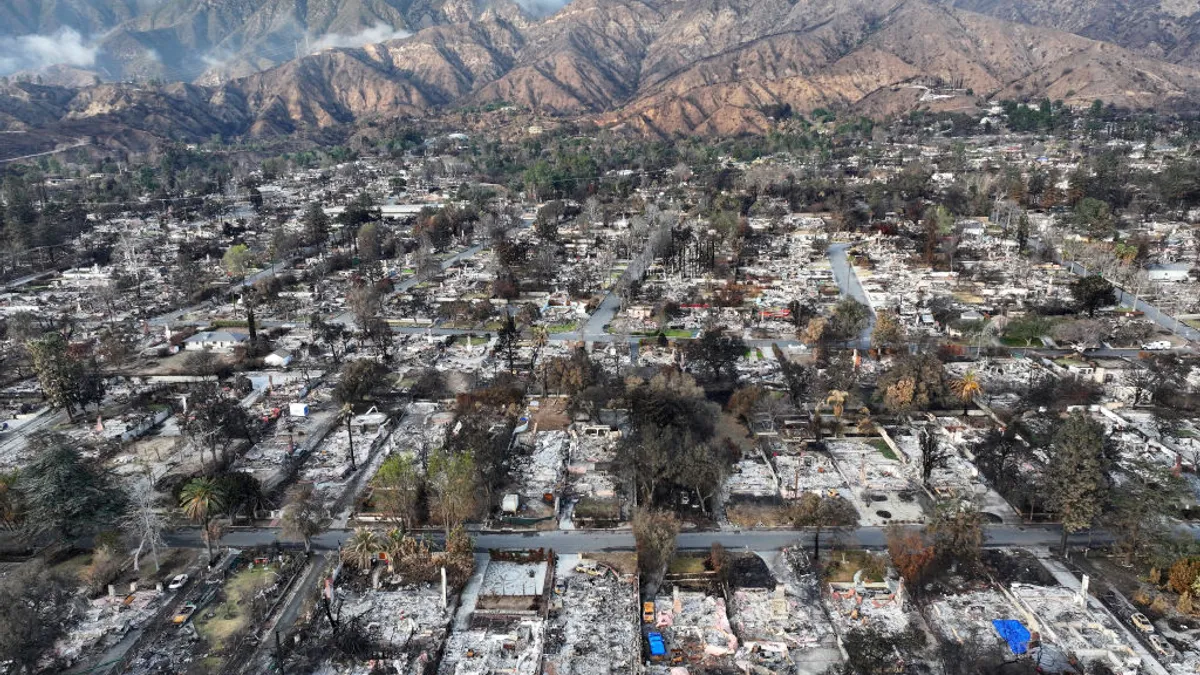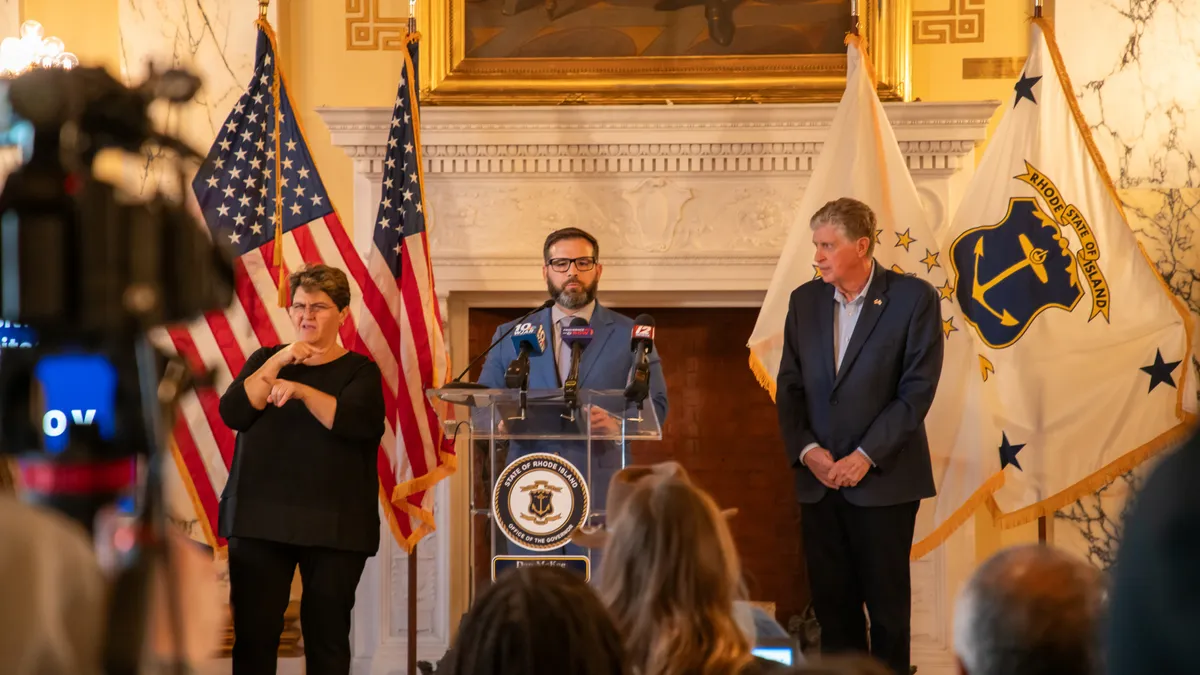With more than $1.5 trillion in federal funding at stake for some of their most vulnerable residents, local leaders are bracing for the official kickoff of the census — and the long-lasting financial impacts of the final count.
New York and Washington, DC are among the cities spending millions of dollars to raise awareness and coordinate their local count. Cities are hoping investments on the front end will show a solid return once results are in and federal money is appropriated, especially because an undercount puts that funding at risk.
"Local officials are the most trusted level of government, and therefore they can and should play a leadership role in ensuring a fair and accurate census count, especially for hard-to-count communities," National League of Cities (NLC) CEO and Executive Director Clarence Anthony wrote in a blog post.
Back-end funds
More than 300 federal spending programs wil be impacted by data from the upcoming census, including low-income housing loans, food stamps and community development grants, according to a census-guided spending report from George Washington University (GWU). Cities are already concerned about the implications of an undercount and how it can affect their ability to fund certain programs.
In the regional plan for the Kansas City metropolitan area, shared between Kansas and Missouri, officials estimate an average 1% undercount, which occured in 2010, would cost the region more than $48 million a year. That undercount was higher for people of color: In 2010 it was estimated that 2.1% of black residents and 1.5% of Hispanics were not counted in the area.
At the county level, the Kansas City plan says a 1% undercount would cost Cass County, MO $2.1 million in funding for 16 federal programs including Medicare and Medicaid, transportation infrastructure funds, Head Start and housing vouchers. There are similarly gloomy predictions for the other counties close by.
Andrew Reamer, author of the GWU report, found that of the federal spending programs guided by census data, 176 programs worth $970.3 billion rely on local-level census data, while 39 programs worth $75 billion rely on both state and local-level data derived from the census. A total of 101 programs worth $458.9 billion rely only on state-level census-derived data.
How different types of census data fund different programs
| Type of census data | No. of programs guided | Total spending |
|---|---|---|
| Local only | 176 | $970.3 billion |
| State and local | 39 | $75 billion |
| State only | 101 | $458.9 billion |
SOURCE: Andrew Reamer, George Washington University
"In other words, census-guided spending makes up a large portion of the economy, the role of census-derived data in guiding that funding is not simple by any means, and the sensitivity of census-guided funding on state and local census accuracy differs greatly from program to program," Reamer wrote.
Perhaps one of the most visible ways cities see the impact of census-based funding is in Community Development Block Grants (CDBG), which require a population of 50,000 for a locality to be eligible. Demographic data like age and socioeconomic factors then helps measure an area's funding need.
With that in mind, it is key for cities to encourage participation. At an event hosted by NLC last year, Arturo Vargas, CEO of the National Association for Latino Elected Officials (NALEO) Educational Fund, said focus group participants have found a resonance in the message that the census will help their communities by potentially bringing in federal resources and giving them better political representation.
"It's such a big deal to understand your role as a citizen, and how that contributes to making sure that after-school programs are funded, or that seniors in your neighborhood can go to exercise, how those things end up having this larger consequence," Francella Ochillo, executive director of the nonprofit internet equity advocacy group Next Century Cities, told Smart Cities Dive.
Accurate census data is also needed to help ethnic minorities, who may find themselves disadvantaged by inaccurate data, according to advocates. In written testimony before the House Oversight Committee in January, John C. Yang, president and executive director of Asian Americans Advancing Justice (AAJC), said detailed data helps "break down the stereotype of the 'model minority,' which has been used to erase the history of exclusion and discrimination against Asian Americans."
"This stereotype is also used to obscure our concerns — failing to recognize critical differences and priorities between Asian American subgroups — and therefore to excuse the lack of government resources and philanthropic investments in our communities," he continued.
Front-end investments
Given the number of programs dependent on an accurate census count, cities are leading the charge and spending their own money to raise awareness of the survey.
Spending levels vary based on cities' budget and population levels, but they have similar aims of recruiting local census volunteers, engaging with local populations in hard-to-reach areas and partnering with public, private and philanthropic organizations to enhance community engagement.
New York is investing the most at the city level, having rolled out a $40 million plan that includes an intensive $8 million communications strategy. The city has also invested in partnerships with community groups and academic institutions, and has recruited paid and voluntary workers to conduct in-field engagement.
The city aims to recruit and onboard a total of 400 paid temporary outreach workers, in addition to thousands of volunteers, by mid-March. The city will also host various events, teach-ins and community canvassing to raise awareness.
In addition, the city partnered with 157 community organizations across all five boroughs, joining with libraries, labor unions, academic, civic and private institutions to mobilize "the full breadth of New York City’s civic infrastructure," according to the city's plan. All told, the city is spending $23 million on community-based organizing and outreach.
"It's such a big deal to understand your role as a citizen, and how that contributes to making sure that after-school programs are funded, or that seniors in your neighborhood can go to exercise, how those things end up having this larger consequence."

Francella Ochillo
Executive director, Next Century Cities
"[This] unprecedented funding is more than a campaign plan," New York City Councilmember Carlos Menchaca, co-chair of the council’s 2020 Census Task Force, said in a statement. "It is a recognition of the trust New Yorkers place in the organizations who serve them every day."
New York’s investment (along with its access to $70 million committed at the state level) is the largest in the country, but many other cities are funding similar efforts too.
Washington, DC included $2.5 million for the census in its FY 2020 budget, following a request from Mayor Muriel Bowser to support local efforts to reach hard-to-count populations. That money will primarily be spent on educating residents about why the census is important and what the government does with the data it collects.
Seattle joined last year with King County, WA and the Seattle Foundation to create a $1 million Regional Census Fund to provide grant funding to community organizations as they prepare for the census.
Meanwhile, Chicago announced a plan to invest $500,000 to fund community organizations to help the city educate and engage residents about the census. It comes with city leaders estimating that nearly half of the city's 2.7 million residents are considered hard to count by the U.S. Census Bureau.
Those cities are making local-level investments in states that have themselves pledged significant sums of money to support census efforts. But that's not the case everywhere.
According to the National Conference of State Legislatures (NCSL), three states — Nebraska, South Dakota and Texas — have taken no action statewide to support the 2020 Census. Two bills in Texas' 2019 legislative session that would have established a statewide Complete Count Commission failed, while in Nebraska, Gov. Pete Ricketts, R, vetoed a bill that would have done the same.
In his message to the state legislature explaining his veto, Ricketts said such a commission at the state level would be "unnecessary" as cities including Lincoln and Omaha, as well as counties and local chambers of commerce, had created Complete Count Committees on their own.
To fill in any gaps at the state level, nonprofit Nebraska Counts came together as a network of nonprofit organizations working to help Nebraska communities at risk of being undercounted. Lincoln also joined with Lancaster County for a joint Census Committee to coordinate education and outreach efforts on the local level.
It is a similar story in Texas, where local governments have stepped up to fill in the education and outreach gaps left by the state government.
Paying for boots on the ground
The hiring of census workers is handled by the U.S. Census Bureau, which has a target of hiring between 300,000 and 500,000 workers nationwide to assist with the count through follow-ups and field operations. Census Bureau officials are projecting confidence in hitting that target, but more local regions are not so sure of their own recruitment efforts.
While some regions are on track to meet their recruitment goals, others like San Francisco, Philadelphia and Raleigh, NC "lag far behind," Vanita Gupta, president and CEO of the Leadership Conference On Civil And Human Rights, said in written testimony before the House Oversight Committee in January. Gupta also raised concerns about the lack of applicants with "necessary language skills."
In February, the Government Accountability Office (GAO) released a report calling preparations for the census "mixed," and saying more needed to be done to hit various targets for readiness. In particular, GAO chided the Census Bureau for lagging behind its interim goal of 2.5 million applicants nationwide for census operations jobs by the end of January.
During testimony before the House Oversight Committee in February, Census Bureau Director Steven Dillingham looked to allay those fears by saying the agency is adding thousands of applicants a day, and even though its hiring goals are ambitious, they're also intentional.
"From the point of view of the Census Bureau, we are not behind," Dillingham said.




















